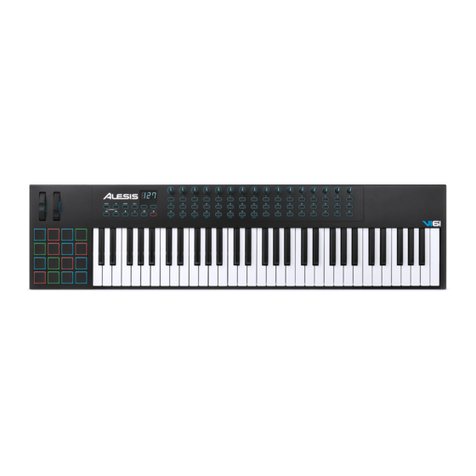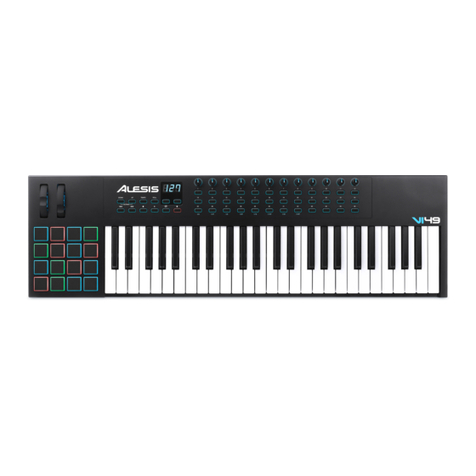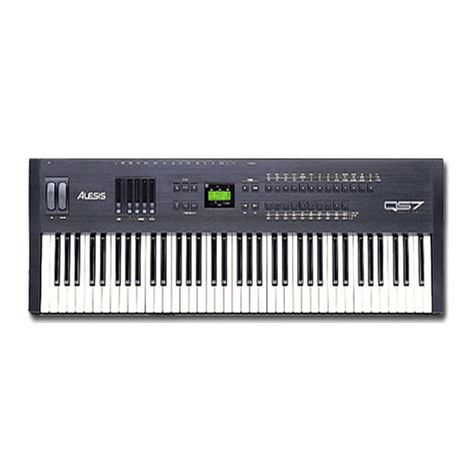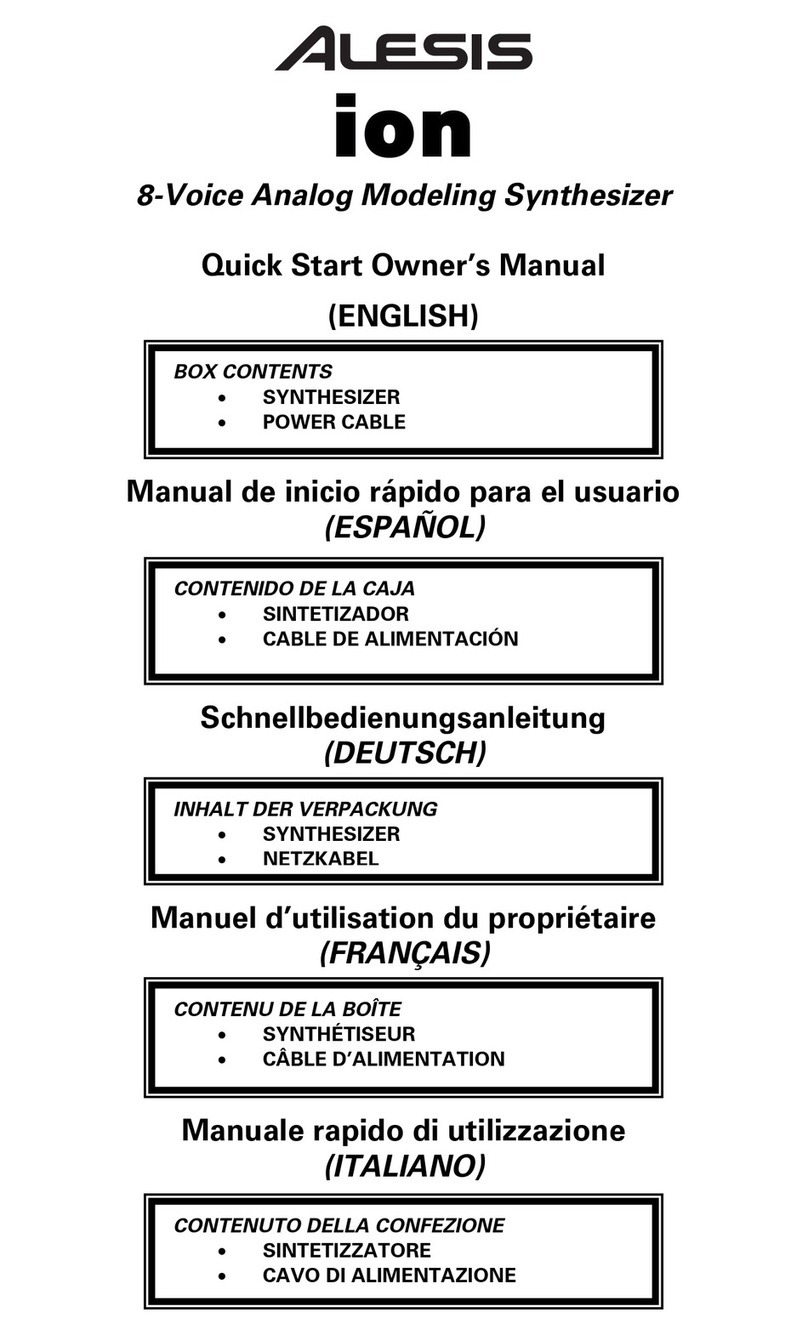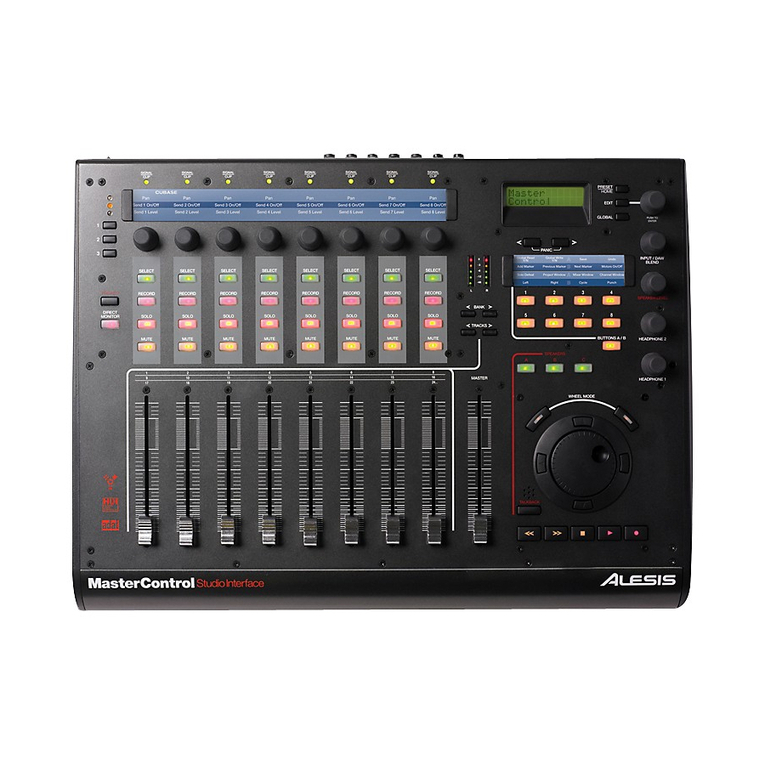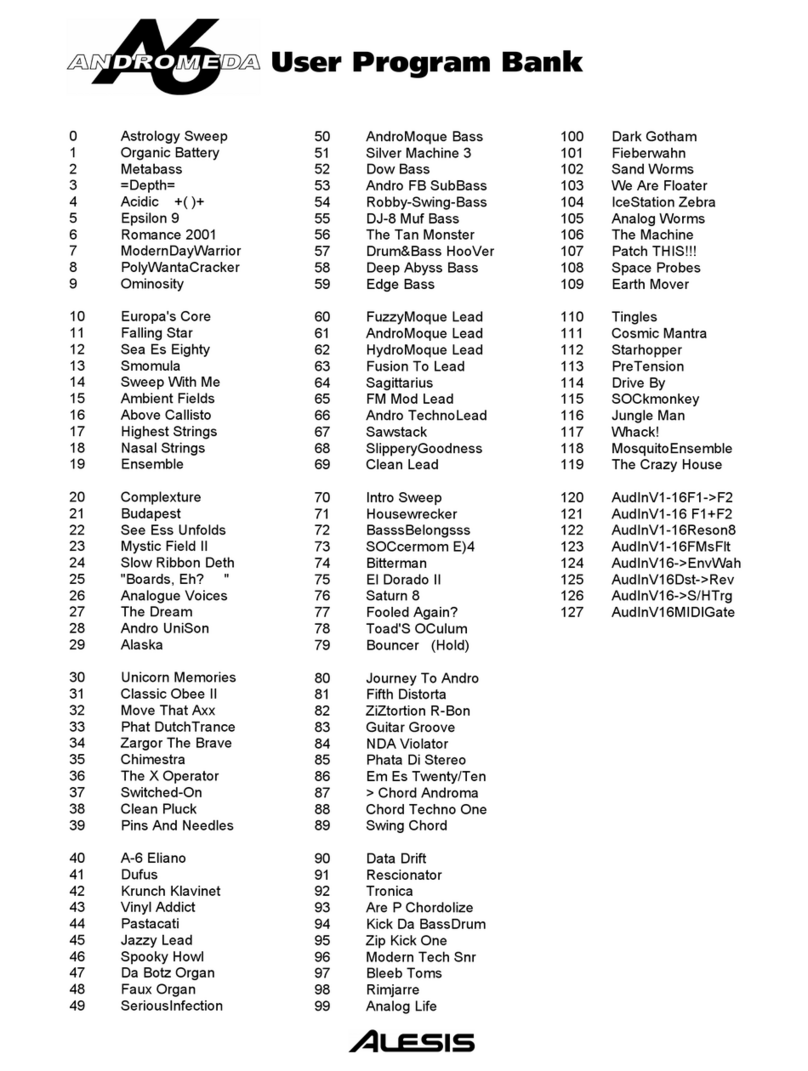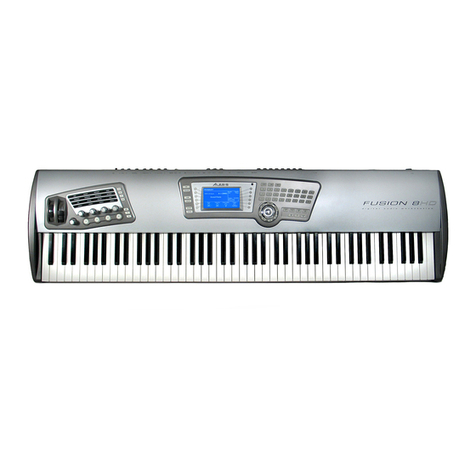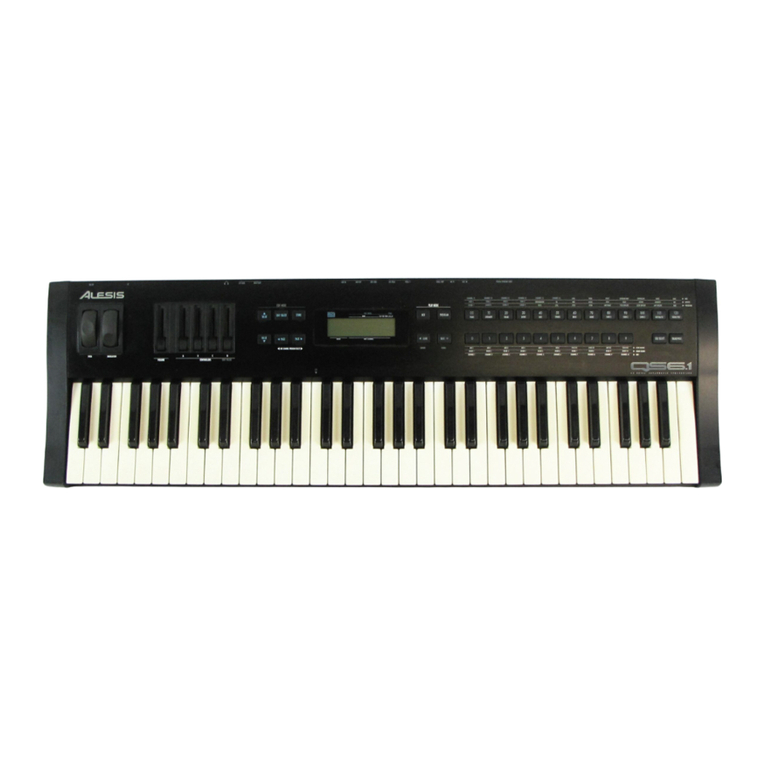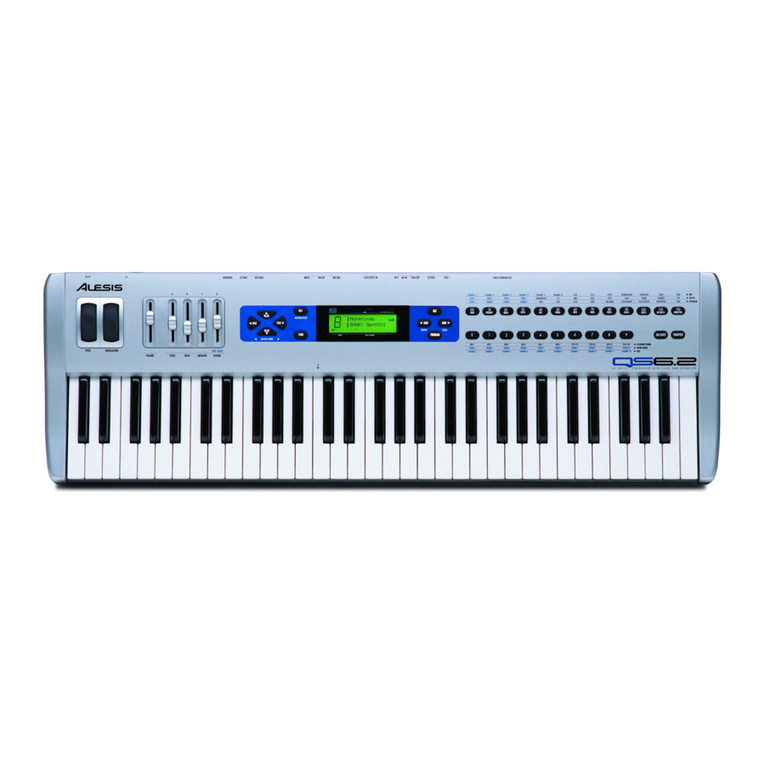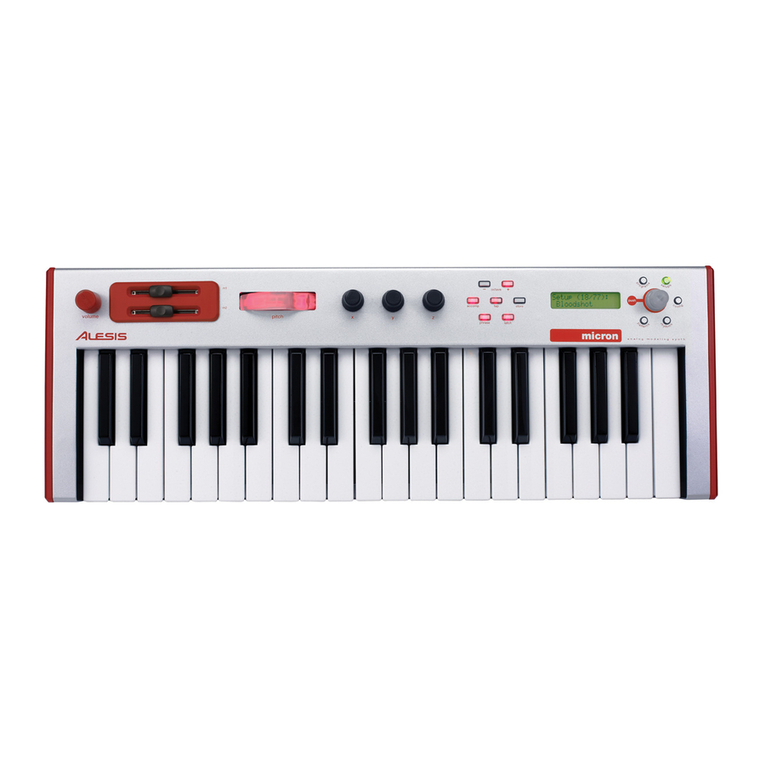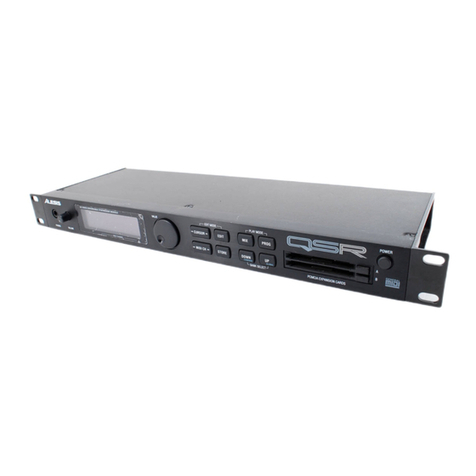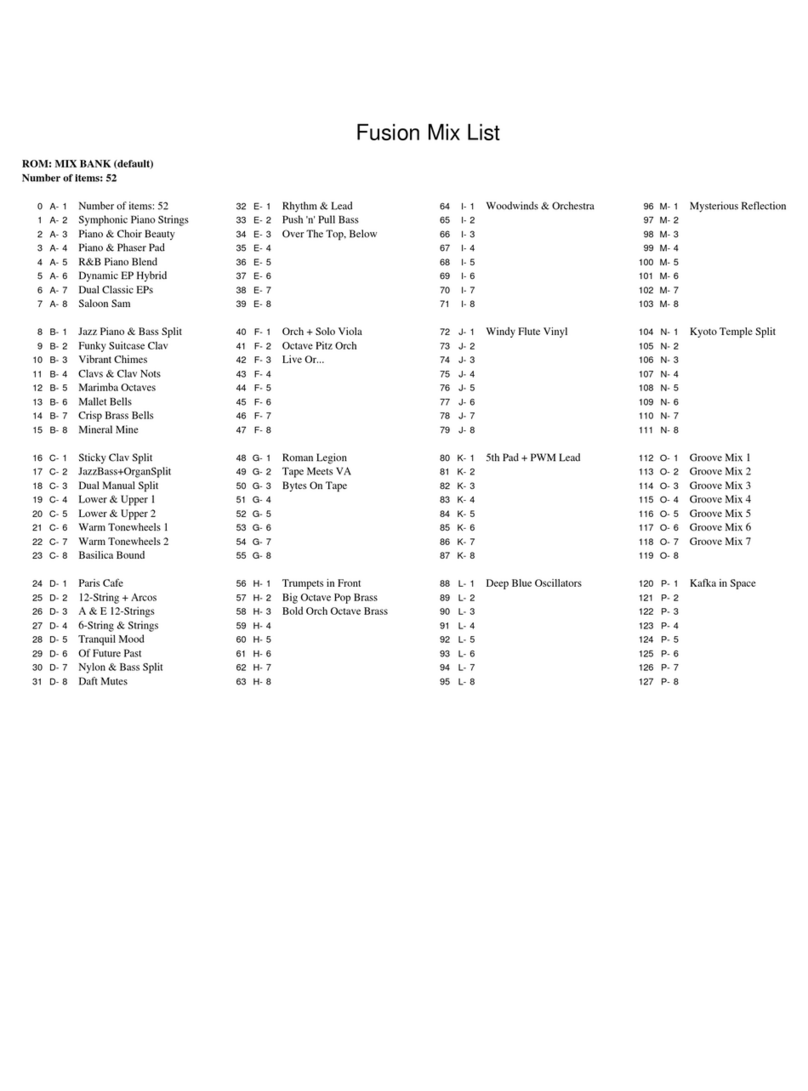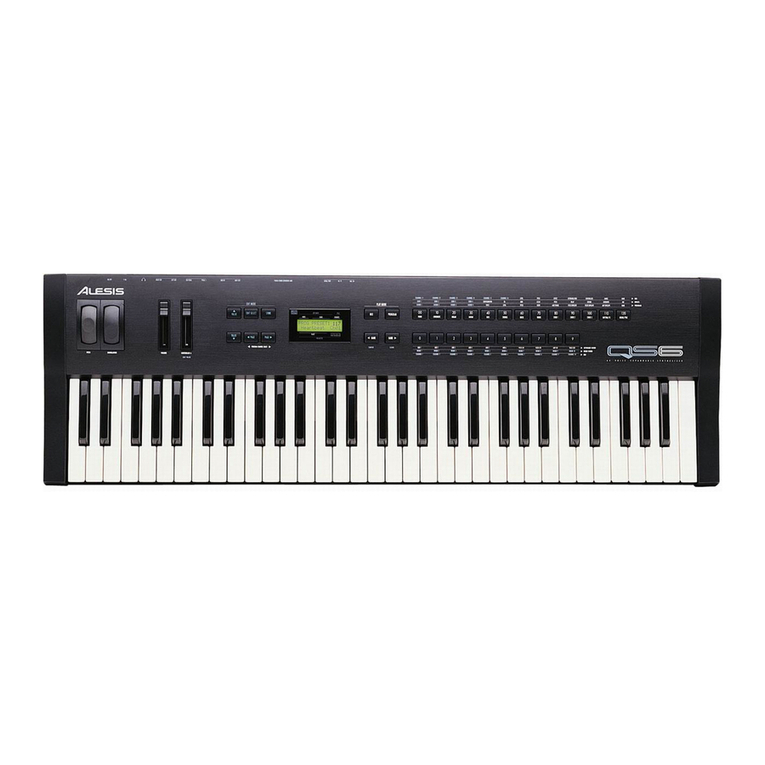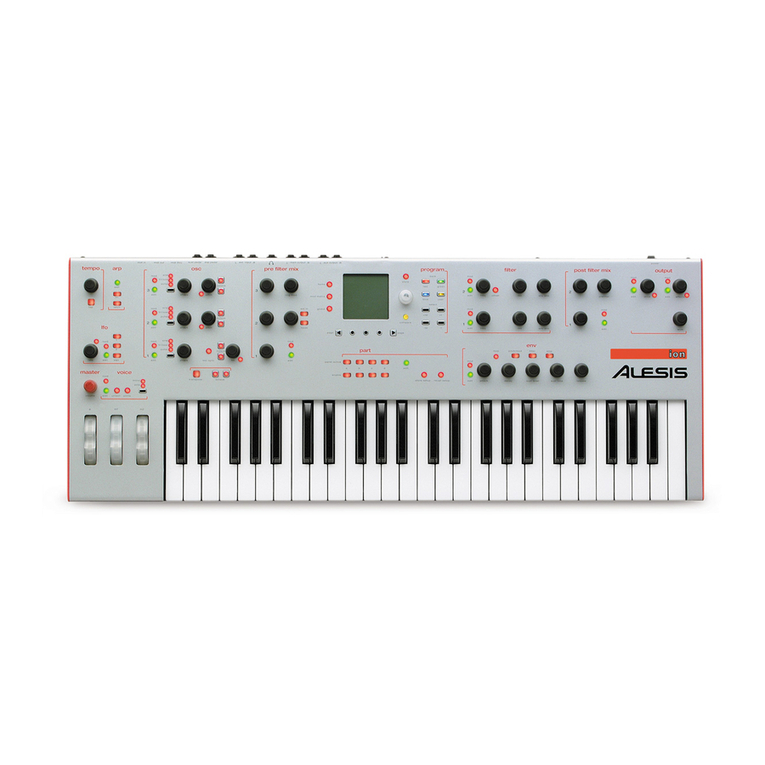
3.5 filter 1 width (variable state filters explained):....................................................................................21
3.6 improving filter 2’ s sound by running filter 1 in notch mode:..........................................................21
3.7 working around the filter 2 resonance bass drop:...............................................................................21
3.8 filter fm:.....................................................................................................................................................22
3.9 modulating filter fm with noise, without hearing noise:....................................................................22
3.10 improving filter sweep range:..............................................................................................................22
3.11 filter keytracking hints:.........................................................................................................................22
3.12 making two filters track each other:....................................................................................................23
3.13 getting a better kick out of the filters:..................................................................................................23
3.14 resonance and bass:...............................................................................................................................23
3.15 using resonance for growl:...................................................................................................................23
3.16 using a notch filter:................................................................................................................................24
3.17 bandpass vs. using the high pass filter 1 and low pass filter 2 in series:........................................24
3.18 about the bandpass invert button:.......................................................................................................24
3.19 getting the filter to scream:...................................................................................................................24
3.20 preventing clipping on the filters:.......................................................................................................25
3.21 more ripping filter techniques:.............................................................................................................25
3.22 filter feedback:........................................................................................................................................25
3.23 adding white noise:................................................................................................................................25
3.24 formant effects:.......................................................................................................................................25
3.25 filter bypass (making extremely bright sounds):...............................................................................26
3.26 post-mix levels:.......................................................................................................................................26
3.27 using the pre-filter knob:.......................................................................................................................26
3.28 advanced – how to use filter 1 or filter 2 twice in parallel:..............................................................26
3.29 really fake 18db technique:...................................................................................................................27
3.30 example on how to make a fat sound:.................................................................................................27
Section 4: LFOS AND S&H.................................................................................................29
4.1 setting up lfo and s/h triggers:..............................................................................................................29
4.2 getting a fast lfo (greater than 25hz):.....................................................................................................29
4.3 polarity:.....................................................................................................................................................30
4.4 pulse width:..............................................................................................................................................30
4.5 lfo trigger modes:.....................................................................................................................................30
4.6 to enable freerunning lfos:......................................................................................................................31
4.7 about lfo triggers:.....................................................................................................................................31
4.8 vibrato:.......................................................................................................................................................31
4.9 s&h trigger modes:...................................................................................................................................31
4.10 global s&h:..............................................................................................................................................31
4.11 s&h once per keypress:..........................................................................................................................31
4.12 lfo sync and the bpm knob:..................................................................................................................31
4.13 lfo sync: the tixprd parameter (1/2 note sync, ¼ note sync, etc.)....................................................32
4.14 randomness and the lfo:........................................................................................................................32
4.15 global lfos vs. per voice:........................................................................................................................32
Section 5: ENVELOPES, VOICE MIX, TRIGGERS, AND THE VCA.........................33
5.1 tuning the vca:..........................................................................................................................................33
5.2 simulating a freerun vca envelope:........................................................................................................33
5.3 locking envelope knobs:..........................................................................................................................33
5.4 looping envelope hints:...........................................................................................................................33
5.5 using the envelope shapes:.....................................................................................................................34
5.6 turning off an envelope stage:................................................................................................................34
5.7 bipolar envelopes:....................................................................................................................................34
5.8 setting legato envelopes (ala minimoog glide):...................................................................................34
5.9 increasing envelope attack with velocity:.............................................................................................34
5.10 setting up random panning:.................................................................................................................34
5.11 colin’ s guide to random panning:........................................................................................................35
